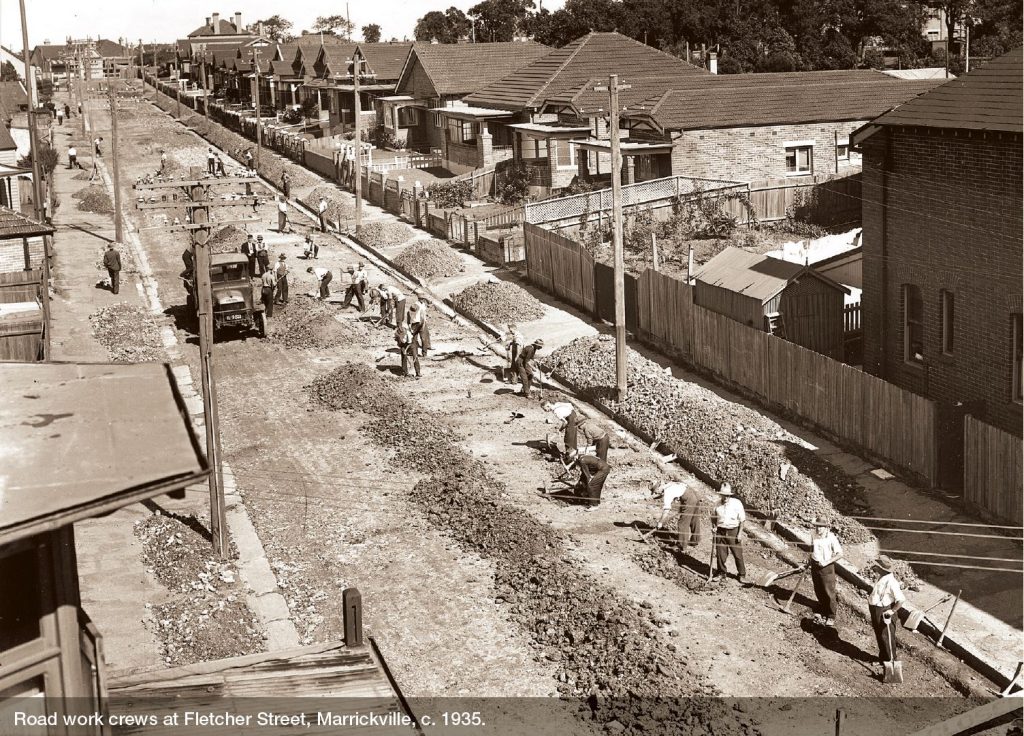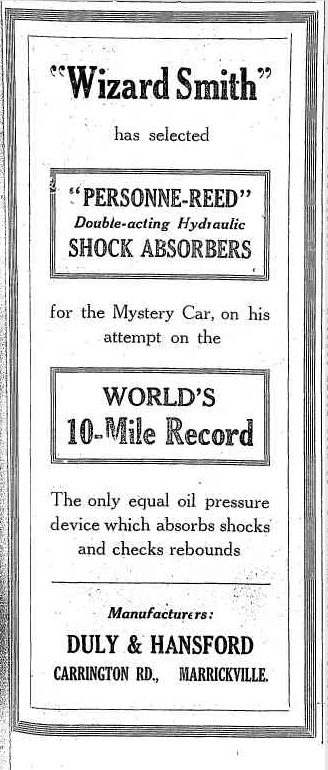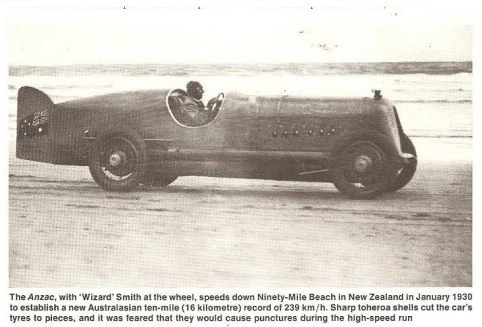Boots, shoes etc, the world-famed Marrickville tweeds, porcelain baths, basins, sinks… famous Marrickville blankets, rugs, clothes, motor bodies wonderfully constructed bodies of superfine grace, beautifully streamlined…furniture, hardwood, toys, machinery! Some marvelous machinery – made in Marrickville. That is the point sought to be driven home by the Marrickville manufacturers “Made in Marrickville” (Australian Made, Labor Daily, April 1930, p 7)
1930 began with a hope. Could the depression be avoided through the manufacturing excellence, showcased at Marrickville Town Hall?

But it was not long before factories slowed due to low sales. General Motors on Carrington Road Marrickville shut in 1931 as Australian car sales declined to just 5 per cent of the previous year. Unemployment in Marrickville reached 29 per cent. Other areas were worse-off (nearby Newtown reached an unemployment rate of 43 per cent).
The NSW Government scrambled to create Relief Schemes to provide work for the unemployed by fixing roads and drainage. A particular focus was to “improve” low lying land in Marrickville, Tempe, Wolli Creek and other parts of Sydney by filling and draining swamps (SMH, 28 July 1930). This included work on the Sydenham pit and drainage of the former Gumbramorra Swamp to the Cooks River.
Relief work was low paid and hard. Those who complained about the conditions were threatened with being cut out of food rations and further work. It is no surprise that strikes and industrial disputes became common. And Marrickville Town Hall once again became an important meeting place, this time for the Unemployed Workers’ Movement, Women’s Vanguard as well as hosting fundraising events to help the unemployed.Next time we’ll find out how General Motors survived the Great Depression.
You might also like to read about Made in Marrickville now.

 Duly and Hansford opened its factory on 1 February 1927, when Mr Duly boasted the firm was “now in a position to supply the wants of the whole of Australia with bright nuts and bolts.” This impressed Federal Minister for Trade and Customs, Mr Herbert Pratten, who officially opened the factory. Pratten was a supporter of local industry and Australian-made products. He said, “if you buy the home-made article you keep both your goods and your money. If you buy outside all you get is the goods.”
Duly and Hansford opened its factory on 1 February 1927, when Mr Duly boasted the firm was “now in a position to supply the wants of the whole of Australia with bright nuts and bolts.” This impressed Federal Minister for Trade and Customs, Mr Herbert Pratten, who officially opened the factory. Pratten was a supporter of local industry and Australian-made products. He said, “if you buy the home-made article you keep both your goods and your money. If you buy outside all you get is the goods.”